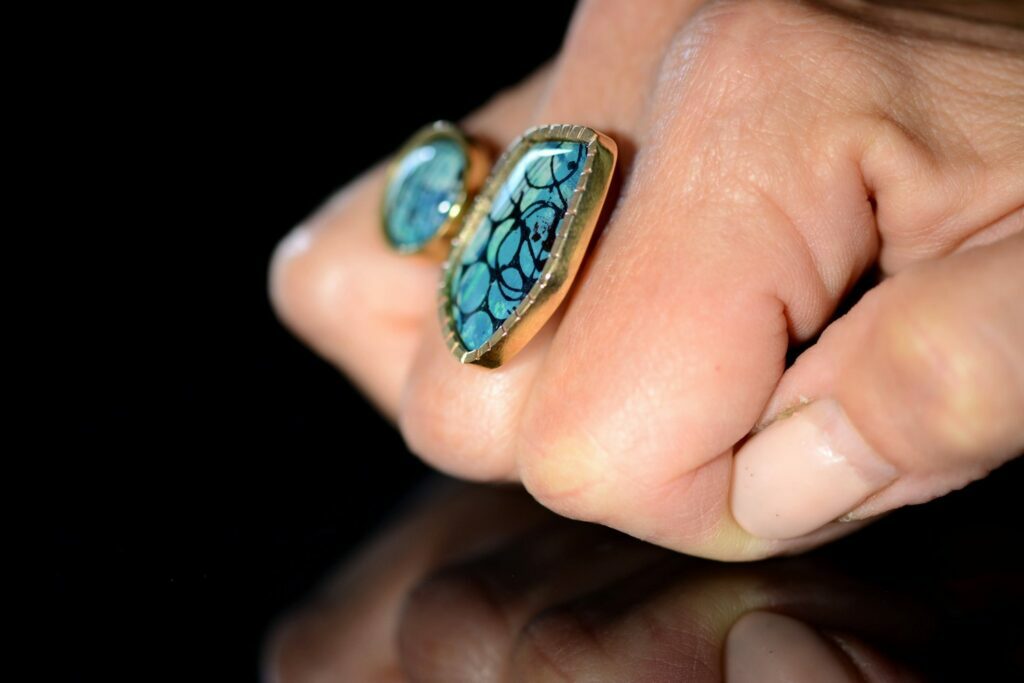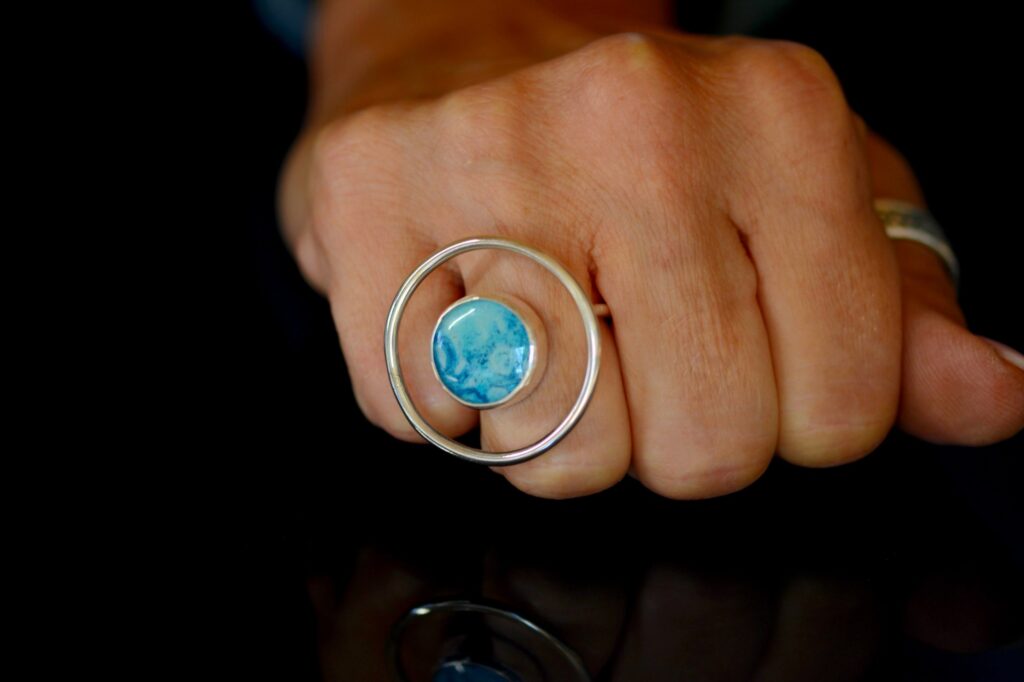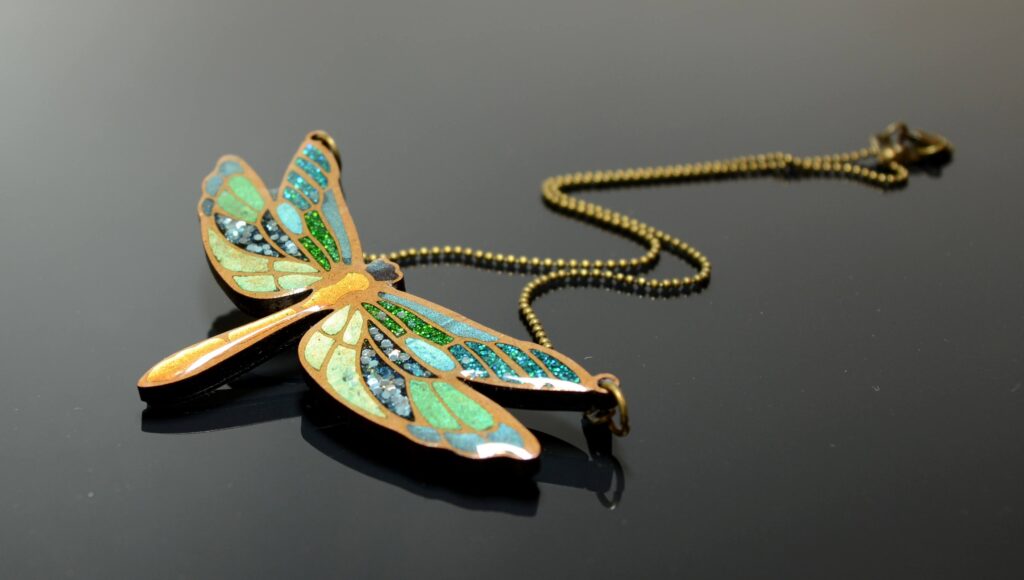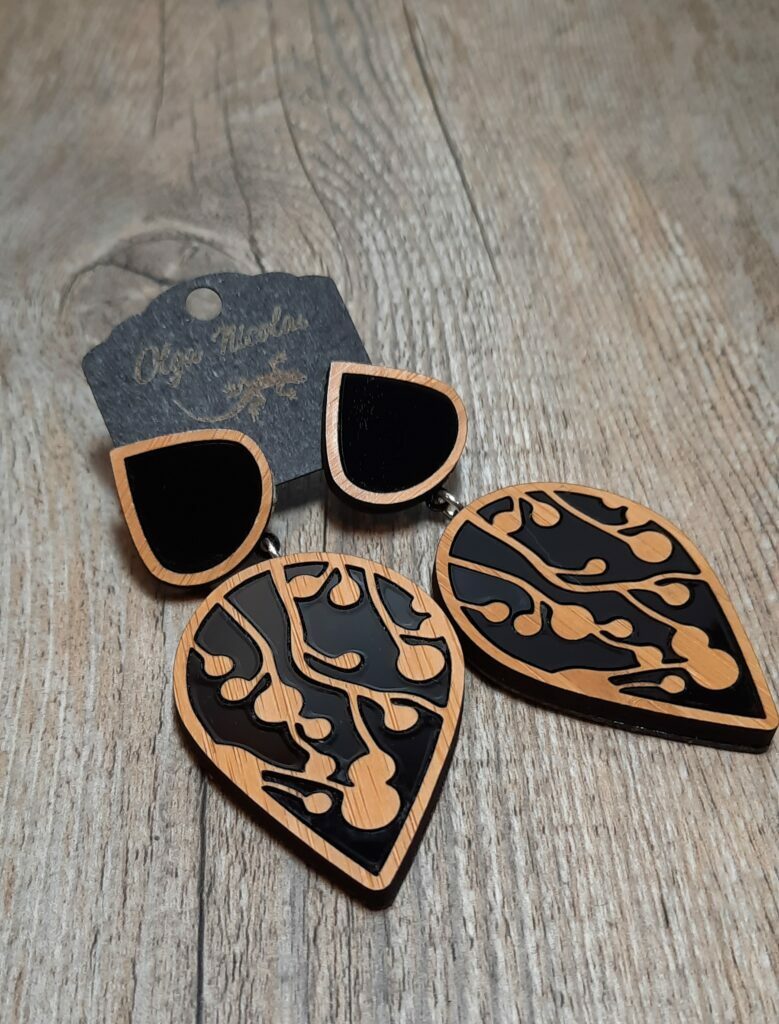Materials
There are a large number of materials used in jewellery. Most of the time we think of gold, silver and other metals, but contemporary jewellery opens up the possibilities even more.
My jewellery is made of several materials that enhance each other. Here are the materials I use most often:
POLYMER CLAY

It is my favourite medium. I have been working with this material since 2005.
Polymer clay is a medium of the plastic family and contains mainly PVC.
It comes in the form of malleable blocks of clay of different colours. The polymer clay remains workabe until cured. This baking will make the material rigid. This curing makes it possible to obtain pieces that are resistant to the bumps and numerous aggressions of everyday life.
I work mainly with black and white polymer clay. I use it more as a canvas on which I will add colour using mixed media techniques.
I often coat the clay with resin to make it shiny, but many of my jewels have a matte effect that is also protected by a thin layer of liquid polymer clay.
WOOD

I mainly use hardwood (Walnut, Cherry, Mahogany, Boxwood, Pear). After cutting the wood (I use a laser cutter) it is sanded and then protected in several layers with an oil specially designed for contacts.
I also create jewellery from veneered wood: in this case I use thin layers of wood glued to a “core”, i.e. a sheet of less precious wood. This is the principle of plywood. I use either plywood that I buy ready-made (Bamboo; maple) or I make the plywood myself and in this case I like to veneer the two sides with two different woods which allows me to have reversible jewellery.
I also use compressed wood, also known as MDF (Medium Density Fibreboard), which I paint directly or cover with hand-decorated paper. MDF is composed of wood fiber and synthetic binder.
STAINLESS STEEL
I use stainless steel mainly to make earring hooks. Stainless steel is a very strong, durable metal that doesn’t rust or oxidize. In wire form, I use 316L stainless steel, also known as surgical steel, which is reputed to be hypoallergenic. When I buy stainless steel primers, I prefer 316L when I can find it, as well as 304, another stainless steel used in jewelry.
I prefer stainless steel in its original color because I know its appearance won’t change over time, but I also use gold-plated stainless steel. In this case, like all plating, the color will evolve as the plating wears.
BRASS

I use 1st grade brass, which means that it does not contain any nickel or lead. Brass is an alloy of copper and zinc. I work this metal from simple sheets and wires of different thicknesses that I will form, solder, sand, polish…
Containing mainly copper, brass is a metal that will tarnish over time (this is due to oxidation) especially if it is not worn often.
STERLING SILVER

Pure silver is too malleable to be used in jewellery, which is why we work with an alloy instead: we add another metal to make it more resistant. Silver 925/1000 is therefore composed of 92.5% pure silver and 7.5% of another metal (usually copper).
Like brass, I work from sheets and wires which I saw, form, file, solder, sand and polish.
Silver is a metal that can oxidise depending on the ph of the skin or in contact with the air, especially if it is not worn often.
All my sterling silver jewellery is guaranteed by my maker’s mark (also called master hallmark). If they weigh more than 30 grams they also bear the state guarantee hallmark.
RESIN

UV resin
It cures under the effect of UV rays (the sun’s rays can be enough but the process is long, which is why I use a UV lamp). Most often I use this resin to protect a surface and to give depth to a decoration.
Epoxy resin
It is a two-component resin that is mixed and hardens irreversibly. If its handling in liquid form requires many precautions (which I take), in solid form the resin is not harmful and is without danger.
PMMA

PMMA (for polymethylmethacrylate) is an acrylic material that is used in the world of packaging, displays, etc. I use it in some of my jewellery in a form that is either opaque or mirror-like. acrylic goes well with other materials such as wood and brass.